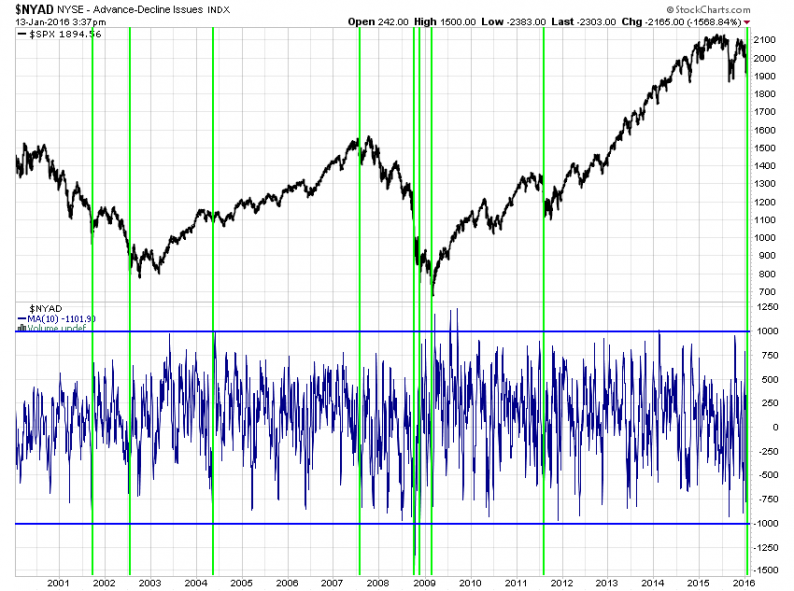
Last fall I wrote a post titled, “This Is Now The Worst Possible Environment For Stock Market Investors.” My point then was that stocks were very expensive, sentiment was exuberant and the trend had shifted to the downside. In other words, all three of the major components of my investing strategy were bearish.
None of this his has changed (though stocks may bounce after the persistent selling we have seen recently). But, in that post, I shared a version of the chart above which became fairly popular so I thought I’d explain what’s going on it and the individual components noted in it.
First, the horizontal blue lines show a Fibonacci target for the S&P 500 at 2138 (2015’s high was 2134.72 on May 18). This target is calculated simply by projecting a 61.8% (the Fibonacci Ratio) extension of the bull market gains from 2009 to 2013, the point at which we finally broke above the old 2007 high. (Apple reached a similar target about a year ago which was a decent sell signal, as well.)
The vertical blue lines simply measure the time between major peaks. The span from the March 2000 peak to the October 2007 peak was seven years and seven months. Seven years and seven months from October 2007 was May 2015, the exact month the S&P 500 peaked last year.
I’ve also highlighted the momentum divergences on the chart. While prices made higher highs in March of 2000 and October of 2007, RSI was making lower highs, suggesting momentum was waning. The MACD crosses at the bottom of the chart were also decent sell signals on those occasions. Both occurred again last year in very similar fashion to those prior occurrences.
The “9” and “13” on the chart are DeMark Sequential signals. The 9 signifies a completed sell setup and the 13 is the completed sell signal. These are essentially the inverse of the buy signals I highlighted in March of 2009. (I also used these as part of my similar target.)












Leave A Comment